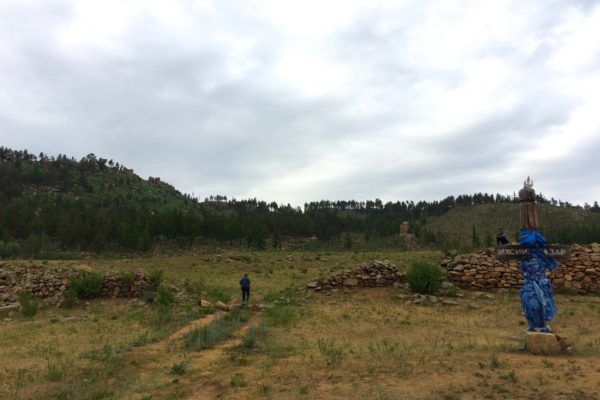On the way to Binder or Batshireet, it is worthwhile to make a stop at the Uglugch wall about 45 kilometers beforehand. It is believed that there was a settlement on this wall from the 10th to the 12th centuries that came from the Kitan, a Protomongolian people from Manchuria, which already existed in the 6th century. The wall was probably also built at this time. It is a nearly three-kilometer-long stone wall with two passages in the north and south, the former height of which was probably between two and four and a half meters.
Its highest point is about three meters high and between two and three meters wide. Like a dry stone wall, the wall consists of granite stones piled loose on top of each other. It was probably of strategic importance because it offers an excellent view of three valleys. It was first researched in 1926 by the Russian archaeologist Kondratiew.
A group of scientists, who were from Mongolia and America, found nearly 60 graves near each other. They think that this area was used a long time ago as a special graveyard for important and powerful people. There are fertile meadows around the wall, which are overgrown with wild onion plants, grasses, and flowers in summer. The Mongolians like to collect and dry the onions in order to season their meat in winter.






